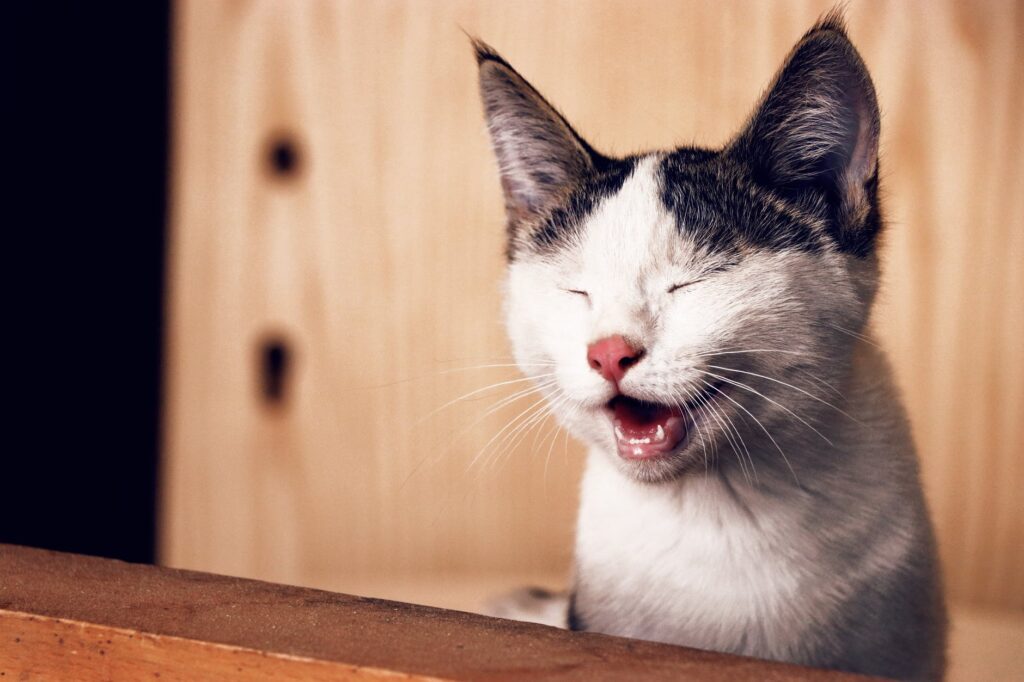By Tricia Roberts

Most of us know a cat meows to say hello, purrs to show contentment, and hisses to show displeasure, but did you know a cat has many other verbal and non-verbal ways of communicating with humans and other animals? And that purring might actually mean your cat is nervous?
Let’s start with the meow. Kittens meow to their mothers when they are hungry or scared. Once a kitten reaches adulthood, this type of calling behavior stops. At that point, meowing is generally reserved for humans. If you hear your cat meowing, it’s probably trying to tell you something. Usually a meow is used as a greeting or a way to tell you it wants food or attention (not all cats want to be left alone), but sometimes a meow can be a way of telling you it is lonely, stressed or not feeling well.
Other vocal cues cats often use are the purr, chirp, hiss and yowl. Cats use their soothing purr to tell you they are relaxed and content, but they can also purr to soothe themselves if they feel nervous or sick. Sometimes cats use an abbreviated chirp to communicate with other cats (or humans) they know well, or they might release a soft chatter while watching prey through a window. Cats often hiss when they feel uncomfortable or threatened, much like we might yell or scream in the same situation. When cats take that hiss up a notch and turn it into a yowl, you know they’re ready to fight.
In addition to their many voices, cats use subtle non-verbal gestures to communicate. It’s a clear sign of affection if your cat is giving you lots of head butts. Your cat might also knead and lick to show love and contentment. When your cat rubs its nose or cheek on you, it is marking you to say you belong to him or her. And those slow blinks that make your cat appear sleepy are really a sign that it’s comfortable and loves you.
More deliberate actions are used as well. Your cat might reach out a paw or purposely lie in your way to ask for attention. Despite being litter-trained, your cat might use the bathroom in the house to let you know it’s time for you to clean the litter box or to mark his or her territory to other pets. And the next time your sweet little cat brings home a dead lizard, don’t be mad. It’s bringing you a gift because it sees itself as your owner.
Finally, your cat uses body language to let you know how it’s feeling. A confident cat that wants to be noticed will walk with its tail straight up while a feline who wants to stay hidden will walk with its tail down and dragging (keep an eye on that behavior as it could indicate a reason to visit the vet). If your cat rolls on its back and exposes its belly, it is relaxed and trusts you. Unlike dogs, however, your cat might not want you to actually touch it, so proceed with caution.
Each cat is different and has its own personality, so your cat may have other ways to communicate. What’s important is that we pay attention to what our furry friends might be saying to us and respond accordingly.

